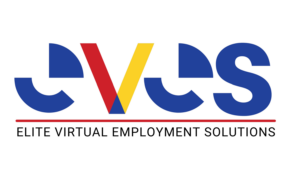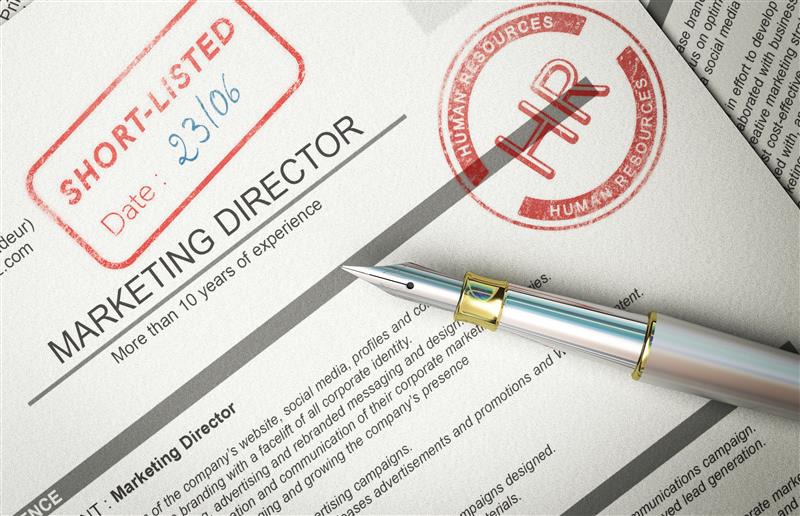A well-written job description is your first and most crucial step in finding the perfect candidate, whether you’re looking locally or across the globe. It’s your opportunity to clearly define the role, attract qualified applicants, and set the stage for a successful hire. This guide will walk you through the essential elements and best practices for crafting job descriptions that deliver results.
- The Importance of a Strong Job Description: Think of your job description as a marketing tool. It needs to capture the attention of the right people and convince them that this is the opportunity they’ve been looking for. A good job description will help you:
- Attract Qualified Candidates: Clearly outlining the necessary skills and experience will deter unqualified applicants, saving you time and resources.
- Set Clear Expectations: A detailed description ensures that potential employees understand the role’s responsibilities and what success looks like.
- Streamline the Hiring Process: By providing comprehensive information upfront, you’ll receive more relevant applications, making screening and interviewing more efficient.
- Market Your Company: Your job description is also an opportunity to showcase your company culture and values, attracting candidates who are a good fit for your organization.
- Key Elements of an Effective Job Description: Every great job description includes several essential components:
- Job Title
- Be Clear and Concise: Use a straightforward title that accurately reflects the role. Avoid internal jargon or overly creative terms that candidates might not search for.
- Use Industry-Standard Language: Opt for titles that candidates are likely to use in their job searches (e.g., “Software Engineer,” “Marketing Manager”).
- Specify the Level: If applicable, include the level of the role (e.g., “Entry-Level,” “Senior,” “Manager”).
- Company Information:
- Compelling Summary: Start with a brief and engaging overview of your company, its mission, and values. Highlight what makes your company a great place to work.
- Showcase Your Culture: Use inclusive language to describe your company culture and work environment.
- Job Summary (or Job Overview):
- Brief Overview: Provide a concise (3-4 sentences) summary of the role’s purpose, key responsibilities, and how it fits into the company. Think of it as your elevator pitch for the job.
- Explain the “Why”: Briefly explain why this role is important to the company’s success and how it contributes to the overall mission.
- Responsibilities and Duties:
- Detailed but Concise: Use bullet points to list the essential tasks and responsibilities of the role. Aim for 5-10 key responsibilities.
- Action-Oriented Language: Start each bullet point with a strong action verb in the present tense (e.g., “Develop,” “Manage,” “Analyze”).
- Focus on Outcomes: Describe the desired results of these tasks rather than just listing activities.
- Prioritize: List responsibilities in order of their importance or frequency.
- Specify Tools and Technologies: Mention any specific software, tools, or equipment the candidate will use.
- Qualifications and Skills:
- Required vs. Preferred: Clearly separate essential (“must-have”) qualifications from desirable (“nice-to-have”) ones.
- Be Specific: Instead of vague terms, list specific education levels (e.g., Bachelor’s Degree in a relevant field), years of experience, certifications, licenses, and technical skills required.
- Highlight Soft Skills: Include important soft skills like communication, teamwork, problem-solving, and leadership.
- Avoid Over-Inflating Requirements: Only list qualifications that are truly necessary for successful performance. Focus on skills rather than just years of experience, especially for entry-level roles.
- Use Inclusive Language: Avoid any language that might discourage qualified candidates from applying.
- Compensation and Benefits:
- Be transparent and include the salary range for the position, considering local market rates relevant to your hiring scope. Also, list the key benefits your company offers, relevant to the potential locations of your hires.
- Salary Range: [Example: ₱### – ₱### per year. Actual salary may vary based on experience and location.]
- Benefits: [List the key benefits offered by your company, such as comprehensive health insurance, paid time off, retirement plan, etc.]
- Working Conditions and Special Demands:
- Physical Requirements: If the role involves any specific physical demands (e.g., lifting, standing for long periods, travel), clearly outline them. Focus on the task rather than the method (e.g., “Ability to lift up to 10 kilograms” or “Ability to lift up to 25 pounds”).
- Work Environment: Describe the typical work environment (e.g., office, manufacturing floor, outdoors).
- Supervisory Responsibilities: If the role involves managing others, clearly state the extent of these responsibilities.
- Travel Requirements: Indicate if travel is required and the estimated frequency, specifying if it’s regional or international, or primarily within a specific country.
- Call to Action:
- Clear Instructions: Provide clear and concise instructions on how to apply for the position, including any required materials (e.g., resume, cover letter) and deadlines.
- Job Title
- Tips for Writing Engaging Job Descriptions: Beyond the essential elements, consider these tips to make your job descriptions more appealing:
- Use Clear and Simple Language: Avoid jargon, technical terms that might not be universally understood, and overly complex sentences.
- Be Concise: Respect candidates’ time by getting straight to the point. Aim for a word count that’s informative but not overwhelming (around 300-660 words).
- Employ Engaging Language and Tone: Write in a way that is interesting and speaks directly to the potential applicant. Use a professional yet relatable tone.
- Write in Active Voice: Use active voice to make your writing more direct and engaging.
- Highlight Growth and Development Opportunities: Mention potential career paths, training programs, and opportunities for skill enhancement.
- Showcase Your Employee Value Proposition: Clearly articulate the benefits of working for your company and in this specific role.
- Speak Directly to Candidates: Use “you” and “we” pronouns to create a more personal connection.
- Sell the Job and the Company: Don’t just list requirements; paint a picture of what it’s like to work in the role and at your organization.
- Be Transparent: Be upfront about the application process, timelines, and any non-negotiable requirements.
- Define Success: Outline what success looks like in this role, potentially including key performance indicators (KPIs) or goals for the first year.
- Optimizing for Reach: The Basics of SEO for Job Descriptions: To ensure your job description reaches the right candidates online, it’s important to understand the basics of Search Engine Optimization (SEO). Think of SEO as making your job posting more discoverable to job seekers using search engines like Google, Indeed, LinkedIn, and others. Here are some key basics to consider:
- Keyword Research: Understand what terms your ideal candidates are actually searching for in their region. Use tools like Google Keyword Planner or consider local job boards and search trends. If you’re hiring a “Marketing Manager,” are they also searching for “Digital Marketing Specialist” or “Brand Manager” in their country? Incorporate these relevant keywords naturally throughout your job description.
- SEO-Friendly Job Titles: Your job title is the most important place to include relevant keywords. Use clear and specific titles that match common search queries in the target location. For example, instead of “Marketing Guru,” use “Digital Marketing Manager.”
- Strategic Keyword Placement: Don’t just stuff keywords into your description. Use them naturally within the job summary, responsibilities, qualifications, and skills sections. Focus on providing valuable information while incorporating relevant terms.
- Location Optimization: If the job is location-specific, clearly mention the city and country in the job title and description. This helps candidates searching for jobs in that area find your posting. For example, “Software Engineer – Tuguegarao City, Cagayan, Philippines”.
- Readability and User Experience: Search engines favor content that is easy for users to read and understand. Use clear formatting, bullet points, and concise language to improve readability. This also benefits the candidate experience.
- Optimize for Job Boards: Different job boards have their own search algorithms. While the basics of keyword usage apply, consider researching best practices for specific platforms where your job description will be posted.
- Showcasing Your Company Culture: Actively highlight your company culture to attract candidates who align with your values:
- Provide Specific Examples: Instead of generic statements, give concrete examples of your company culture in action.
- Mention Team Activities and Initiatives: Describe any team-building activities, social events, or employee resource groups (ERGs).
- Link to Culture Resources: Include a link to your company’s culture page or a video showcasing your workplace.
- Use Authentic Language: Reflect the actual tone and atmosphere of your workplace in your writing.
- Avoiding Common Mistakes: Be aware of these common pitfalls when writing job descriptions:
- Using discriminatory language (ensure compliance with local laws).
- Overloading the description with unnecessary details.
- Having unclear or ambiguous responsibilities.
- Using excessive internal jargon or acronyms.
- Listing unrealistic or unnecessary qualifications.
- Maintaining a negative or unenthusiastic tone.
- Neglecting to sell the job and the company culture.
- Having poor formatting and readability.
- Other Considerations for Specific Employers: While the previous sections provide general best practices, remember that the most effective job descriptions are tailored to the specific needs and context of your organization and the role you are hiring for. Consider the following:
- Industry-Specific Requirements and Language: Different industries often have their own unique terminology, required certifications (e.g., CPA or ACCA for accounting in some regions, RN for nursing in the US), and expected skill sets prevalent in different parts of the world. Ensure your job description reflects these specific nuances. Research job descriptions of successful companies in your industry for similar roles to understand the common language and requirements used.
- Reflecting Your Unique Employer Brand: Go beyond generic descriptions of company culture. Think about what truly differentiates your organization and makes it an attractive place to work for talent from various backgrounds, whether locally or internationally. Highlight aspects like work-life balance, opportunities for international assignments (if applicable), or a mission that resonates with your target audience.
- Targeting Your Ideal Candidate Profile: Consider the specific skills, experience, and personality traits you are looking for in the ideal candidate within your intended labor market. Think about their career aspirations and tailor the language to appeal to those motivations, considering potential cultural differences in job expectations.
- Job Description Template: Use this template as a starting point and customize it to fit your specific needs:[Company Name][City, Country/State] (Remote/Hybrid/On-site)
Reports To: Job Summary:About [Company Name]:
[Write a compelling paragraph about your company, its mission, values, and culture, tailored to attract your target audience, whether local or global. You might mention your commitment to diversity and inclusion or specific employee benefits.]
Responsibilities and Duties:
- [Example: Develop and execute marketing campaigns targeting [specific region/global markets]].
- [Example: Ensure compliance with [relevant local/international] regulations and industry standards.]
- [Continue listing 5-10 key responsibilities using action verbs.]
Qualifications:
Required:
- [List the absolute minimum education (e.g., Bachelor’s degree in relevant field), experience (e.g., 3+ years of experience in a related role), certifications (e.g., Project Management Professional (PMP)), and skills required for the role, relevant to your hiring scope.]
- [Example: Bachelor’s degree in Computer Science or related field.]
- [Example: 3+ years of experience in software development.]
Preferred:
- [List any additional qualifications or skills that would be beneficial but are not strictly required.]
Skills:
Required:
- [List essential hard and soft skills necessary for the role.]
- [Example: Excellent written and verbal communication skills in English (and other languages if required based on hiring scope).]
Preferred:
- [List any additional skills that would be advantageous.]
- [Example: Experience with specific software or platforms relevant to your target market.]
Compensation and Benefits:
- Salary Range: [Example: ₱### – ₱### per year. Actual salary may vary based on experience and location.]
- Benefits: [List the key benefits offered by your company, such as comprehensive health insurance, paid time off, retirement plan, etc.]
Working Conditions:
[Describe the typical working environment and any specific physical demands or requirements (e.g., occasional international travel, ability to work across different time zones).]
Equal Opportunity Employer:
[Example (Philippines): “[Company Name] is proud to be an Equal Opportunity Employer. We celebrate diversity and are committed to creating an inclusive environment for all employees. All qualified applicants will receive consideration for employment without regard to race, color, religion, sex, national origin, disability, or any other characteristic protected by applicable laws.”]
To Apply:
[Provide clear instructions on how interested candidates should submit their application (e.g., submit resume and cover letter through our online portal at [link to application page]).
- Final Tips
- Get a Second Opinion: Have your job description reviewed by a colleague or the hiring manager for clarity and accuracy, ensuring it resonates with your target audience and aligns with local hiring practices.
- Keep it Updated: Regularly review and update your job descriptions to ensure they accurately reflect the current role and market conditions in your hiring locations.
- Consider Creative Formats: For certain roles, explore using video or infographic job descriptions to make your posting stand out to candidates.
By following this comprehensive guide and utilizing the template, you can craft compelling job descriptions that will attract the best talent to your organization, no matter where they are located. Remember to tailor each description to the specific role and your company’s unique needs within your intended hiring scope.
Need more help? Just reach out to our recruiters and they’ll be happy to share more information with you (careers@evesolutions.net).





Leave A Comment
You must be logged in to post a comment.